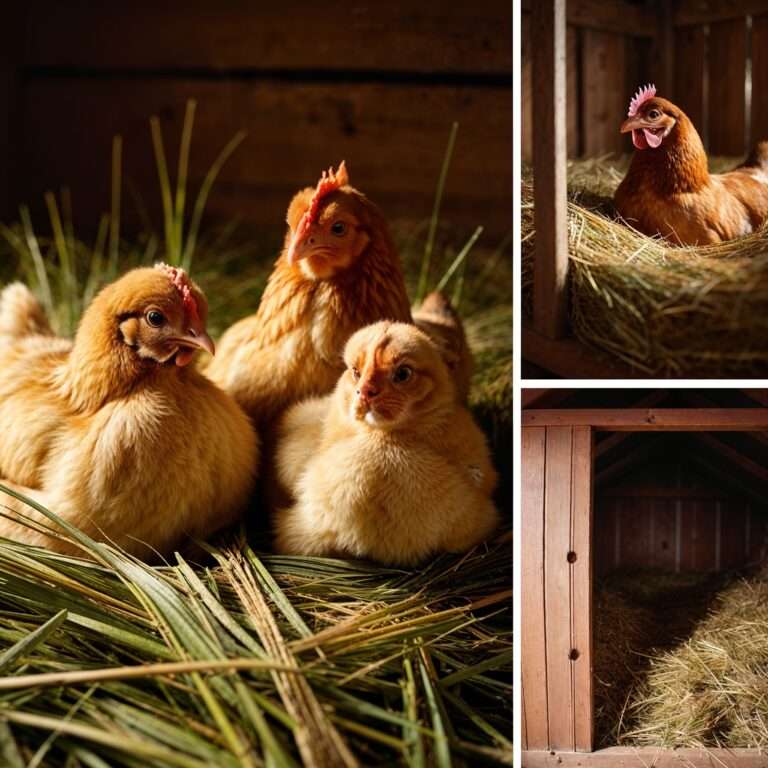
planting a memorial for chickens or ducks A simple garden can become a living tribute to a cherished pet.
Losing a pet chicken can be a deeply emotional experience, but planting a memorial for chickens or ducks helps honor their memory while offering closure. In this guide, we’ll walk you through the steps to properly bury your beloved feathered friend, select a fitting memorial, and navigate local regulations to ensure a respectful and lasting tribute. Whether you’re saying goodbye to a cherished flock member or your first backyard chicken, these tips will help you create a heartfelt farewell.
Why Create a Living Memorial?
Planting a memorial for chickens or ducks is more than a burial—it’s a way to reconnect with nature and honor the bond you shared with your pet. Here’s why this practice is both meaningful and beneficial:
1. Cycle of Renewal
Nature’s cycle is one of renewal, and planting over a burial site symbolizes life’s continuity. As your pet’s remains decompose, they release nutrients that nourish the soil and support the growth of the plant above. This process transforms loss into a life-giving act.
2. Personalized Tribute
A specific plant, like a fruit tree or flowering bush, becomes a lasting reminder of your pet. Over time, this living marker integrates into your landscape, offering blooms, fruit, or shade that keeps their memory alive.
3. Sustainable Gardening
Animal remains enrich soil naturally, much like organic fertilizers. By planting above the burial site, you create a nutrient-rich zone ideal for supporting fruit-bearing plants, hardy flowers, or lush greenery.
Step-by-Step Guide: How to Plant a memorial for chickens or ducks
1. Choosing the Right Spot for Your Pet’s Resting Place
- Pick a Peaceful Location: Select a serene area in your yard, away from water sources, vegetable gardens, or heavy foot traffic. This ensures the site remains undisturbed and allows you space for reflection.
- Match Soil and Sunlight Needs: The chosen location should suit the plant’s requirements. For example, fruit trees thrive in full sun, while some flowering shrubs prefer partial shade.
2. Preparing the Burial Site
- Dig an Appropriately Sized Hole: Aim for a depth of 2–3 feet to prevent disturbance from scavengers and to ensure proper decomposition. In sandy or loose soil, go for the deeper end of this range.
- Add Organic Material: Create a base layer of straw, sawdust, or wood shavings at the bottom of the hole. This helps buffer soil acidity and aids decomposition by promoting airflow.
3. Selecting the Right Plant for a Living Marker
Choose a plant that suits your climate, soil, and symbolic intent. Here are some excellent options:
Fruit Trees
- Apple or Cherry Tree: These trees provide beautiful spring blossoms and summer fruit, symbolizing growth and abundance.
- Mulberry or Fig Tree: Hardy and productive, these trees offer shade, fruit for your family, and food for local birds.
Berry Bushes
- Blueberry Bush: Thrives in acidic soil, which aligns well with the slightly acidic nature of decomposing organic matter.
- Elderberry Bush: Fast-growing and medicinal, elderberries bring biodiversity and attract pollinators.
Flowering Shrubs
- Lavender: Resilient, fragrant, and pollinator-friendly, lavender creates a calming presence over your pet’s resting place.
- Hydrangea: Produces lush seasonal blooms, serving as a colorful, perennial tribute.
4. Planting the Living Marker
- Cover the Burial Site with Soil: Place your pet in the hole and cover with soil, lightly compacting the area. Consider adding compost or bone meal to enrich the planting zone.
- Position the Plant: Dig a shallow hole above the burial site for your chosen plant. Position it carefully to avoid disrupting the remains below.
- Water and Mulch: Water the area generously and add mulch around the plant to retain moisture and create a tidy appearance.
Benefits of a Living Marker for Your Garden and Homestead
1. Soil Enrichment
The organic decomposition of animal remains provides a slow-release nutrient source for the plant. This natural composting process reduces the need for synthetic fertilizers.
2. Biodiversity and Wildlife Support
Flowering shrubs and fruit trees attract pollinators, while berry bushes offer food for birds and other wildlife. These additions create a more dynamic and ecologically friendly garden.
3. Emotional Connection
Every bloom or fruit becomes a reminder of your pet’s legacy, creating an emotional bond between you, your garden, and the cycle of life.
4. Sustainable Homesteading
Planting edible trees or bushes over the burial site provides a renewable source of sustenance. Your pet’s memory becomes part of the homestead, contributing to your family’s meals with a memorial harvest.
Tips for Maintaining a Living Memorial
- Annual Mulching: Add a fresh layer of mulch each year to retain soil moisture and support plant health.
- Regular Watering: Young plants need consistent watering to establish strong roots. Once mature, many trees and shrubs are drought-resistant.
- Seasonal Pruning: Prune fruit trees and bushes annually to encourage healthy growth and maintain shape. This symbolizes renewal and keeps the memorial vibrant.
DARWIN’s Take: The Beauty of Transformation
Creating a living memorial is about more than honoring a pet—it’s about embracing the beauty of transformation. Nature never truly wastes; it repurposes and renews. By planting a tree, bush, or flower above your pet’s burial site, you weave their life into the ecosystem of your garden, ensuring their legacy endures.
In a world where the connection to nature often feels distant, this practice brings you closer to the earth’s rhythms. It reminds us that life continues, even in loss, and that the simple act of planting can turn grief into something beautiful, tangible, and life-sustaining. Every blossom, fruit, or fragrant bloom becomes a testament to your pet’s presence—a reminder that even in death, life flourishes.
More Reading on Paranoid Prophet
- Winter Chicken Memes and Facts: Dive deeper into the lighter side of chicken care with a collection of winter-themed chicken memes and fun facts about how chickens handle the cold. You’ll discover amusing insights and practical tips for your feathered friends in winter.
- Poultry Care & Backyard Flocks: Explore the full range of poultry care content, where you’ll find articles on optimizing your backyard flock’s health, well-being, and happiness. Whether you’re new to raising chickens or a seasoned keeper, this section provides valuable advice for every aspect of chicken ownership.
- Wheatgrass Hay & Winter Chickens: Learn about the benefits of wheatgrass hay for your chickens during the winter months. This article explores how adding wheatgrass to their diet can enhance your flock’s nutrition and overall health, helping them thrive through colder seasons.
SOURCES
Honoring a deceased pet chicken through proper burial and memorialization is a meaningful way to cherish their memory. Here are some external resources offering guidance on this process:
- 4 Steps to Properly Burying a Deceased Chicken
This article outlines essential steps for burying a chicken, including checking local ordinances, selecting an appropriate burial site, and ensuring the grave is deep enough to prevent scavenging by other animals. - Chicken Memorials: Your Tribute to a Much-Loved Hen or Rooster
This resource discusses various ways to memorialize a pet chicken, such as creating personalized memorial stones or plaques, and offers a platform for sharing tributes to beloved chickens. - How to Dispose of a Dead Chicken (4 Options)
This guide explores different methods for disposing of a deceased chicken, including burial, cremation, and composting, along with considerations for each approach. - Chicken Memorial Gifts
This Etsy marketplace features a variety of handmade and personalized memorial items for chickens, such as engraved stones, ornaments, and garden stakes, allowing pet owners to create a lasting tribute. - 5 Helpful Tips—What to Do When Your Chicken Dies
This article provides practical advice on handling the death of a chicken, including determining the cause of death, disposal options, and coping with the emotional aspects of losing a pet.
These resources offer valuable insights into both the practical and emotional aspects of saying goodbye to a pet chicken, helping you navigate this challenging time with compassion and respect.
FAQs: Living Memorial for Pet Chickens or Ducks
General Questions About Living Memorials
- What is a living memorial for a pet chicken or duck?
A living memorial involves burying a pet chicken or duck and planting a tree, bush, or flower above their resting place as a symbolic and sustainable way to honor their memory. - Why should I create a living memorial for my pet chicken or duck?
A living memorial offers a lasting tribute to your pet, enriches the soil, and contributes to your garden’s beauty and productivity. - Is it safe to bury a pet chicken or duck in my backyard?
Yes, as long as you follow local regulations, bury the remains at an appropriate depth, and choose a location away from water sources and vegetable gardens. - Can a living memorial benefit my garden?
Absolutely. The decomposition of your pet’s remains enriches the soil with nutrients, supporting the growth of the tree, bush, or flower planted above.
Choosing and Planting Living Markers
- What types of plants are best for a pet memorial?
Fruit trees, berry bushes, and flowering shrubs like lavender or hydrangea are excellent choices, as they provide beauty, sustenance, and biodiversity. - How deep should I bury my pet chicken or duck?
Aim for a depth of 2–3 feet to prevent disturbance from scavengers and ensure proper decomposition. - Can I plant a fruit tree over the burial site?
Yes, planting a fruit tree is a meaningful way to create a living marker while producing food for your family. - Should I add anything to the soil when burying my pet?
Adding a layer of organic material like straw or wood shavings can aid decomposition and improve soil health. - What is the best time of year to plant a living marker?
Fall and spring are ideal planting seasons, as they provide favorable conditions for root establishment.
Caring for Your Living Memorial
- How do I maintain a living memorial plant?
Water the plant regularly, especially during its first year, and mulch annually to retain moisture and enrich the soil. - Does the type of soil affect the plant’s growth?
Yes, matching the plant to your soil type and sunlight conditions ensures it thrives. For example, blueberries prefer acidic soil, while lavender grows well in well-drained, sandy soil. - Can I prune the tree or bush planted as a living memorial?
Pruning is recommended to maintain the health and shape of the plant and to encourage new growth each season. - What if the plant doesn’t survive?
If the plant fails to thrive, consider testing the soil and replanting with a hardier species suited to your climate and conditions. - Will the burial site attract scavengers?
Properly burying your pet at a sufficient depth (2–3 feet) and compacting the soil should prevent scavengers from disturbing the site.
Symbolism and Personal Connection
How does a living memorial honor my pet’s memory?
A living memorial grows and changes over time, serving as a tangible, beautiful reminder of your pet’s life and their connection to your garden.


